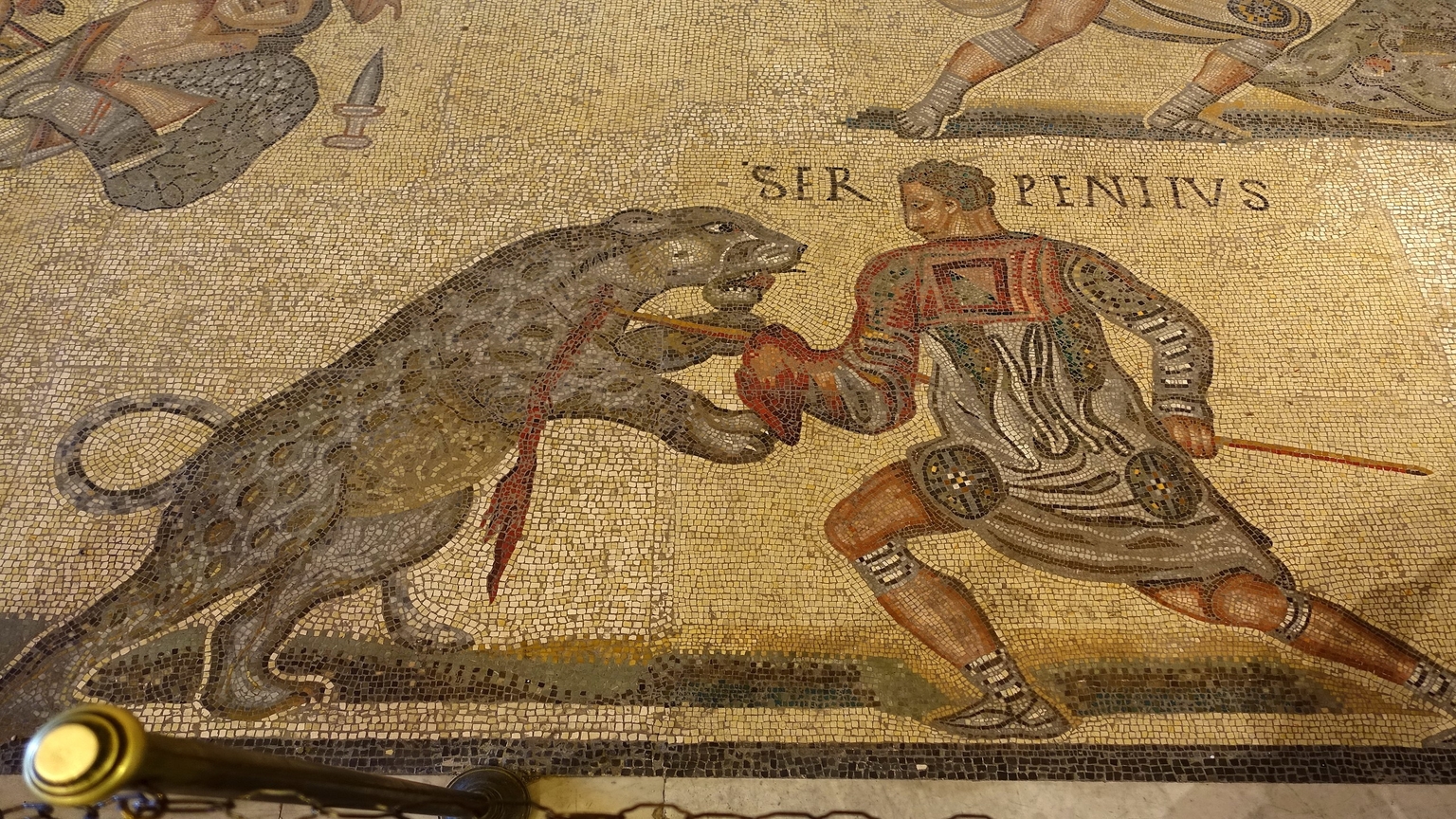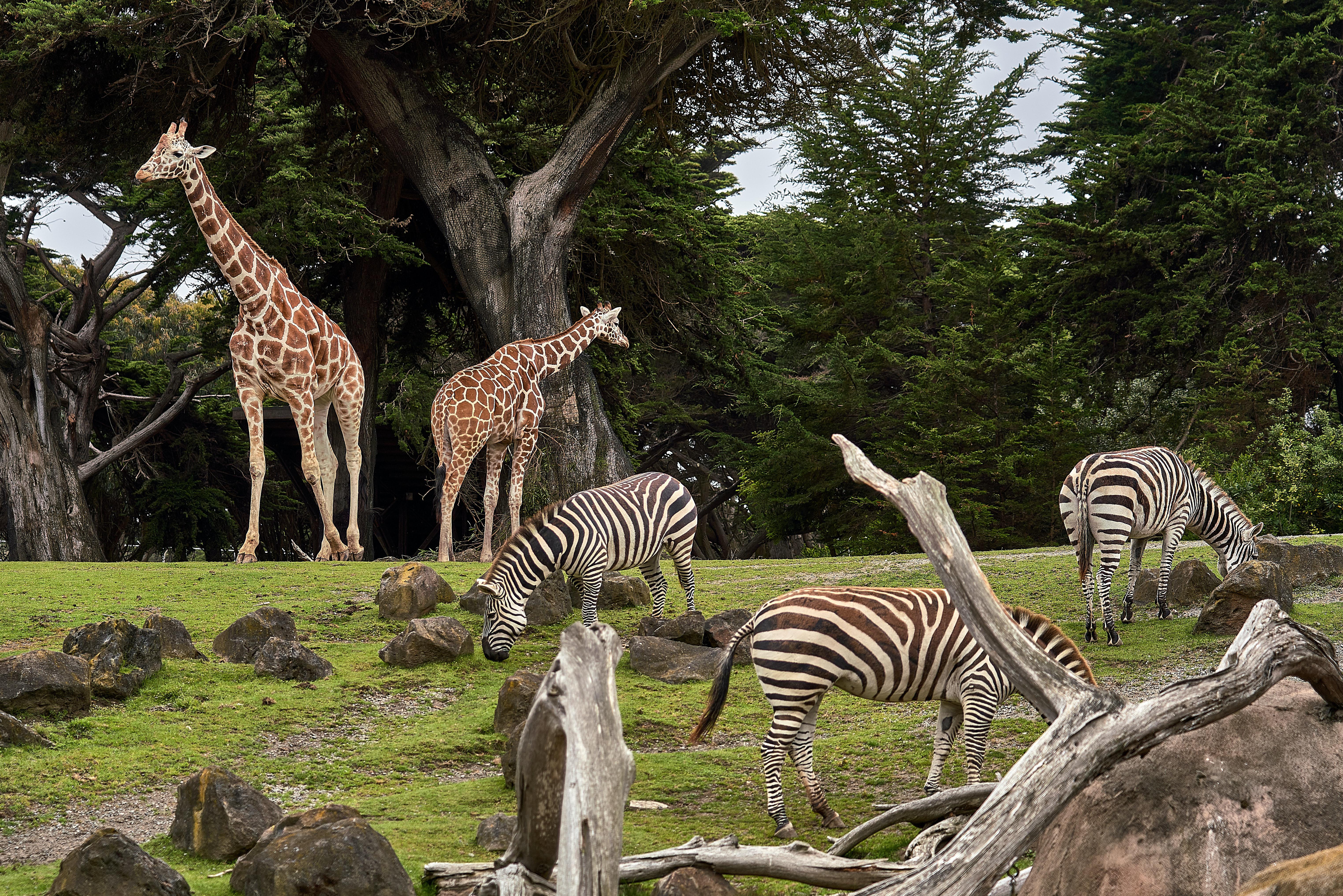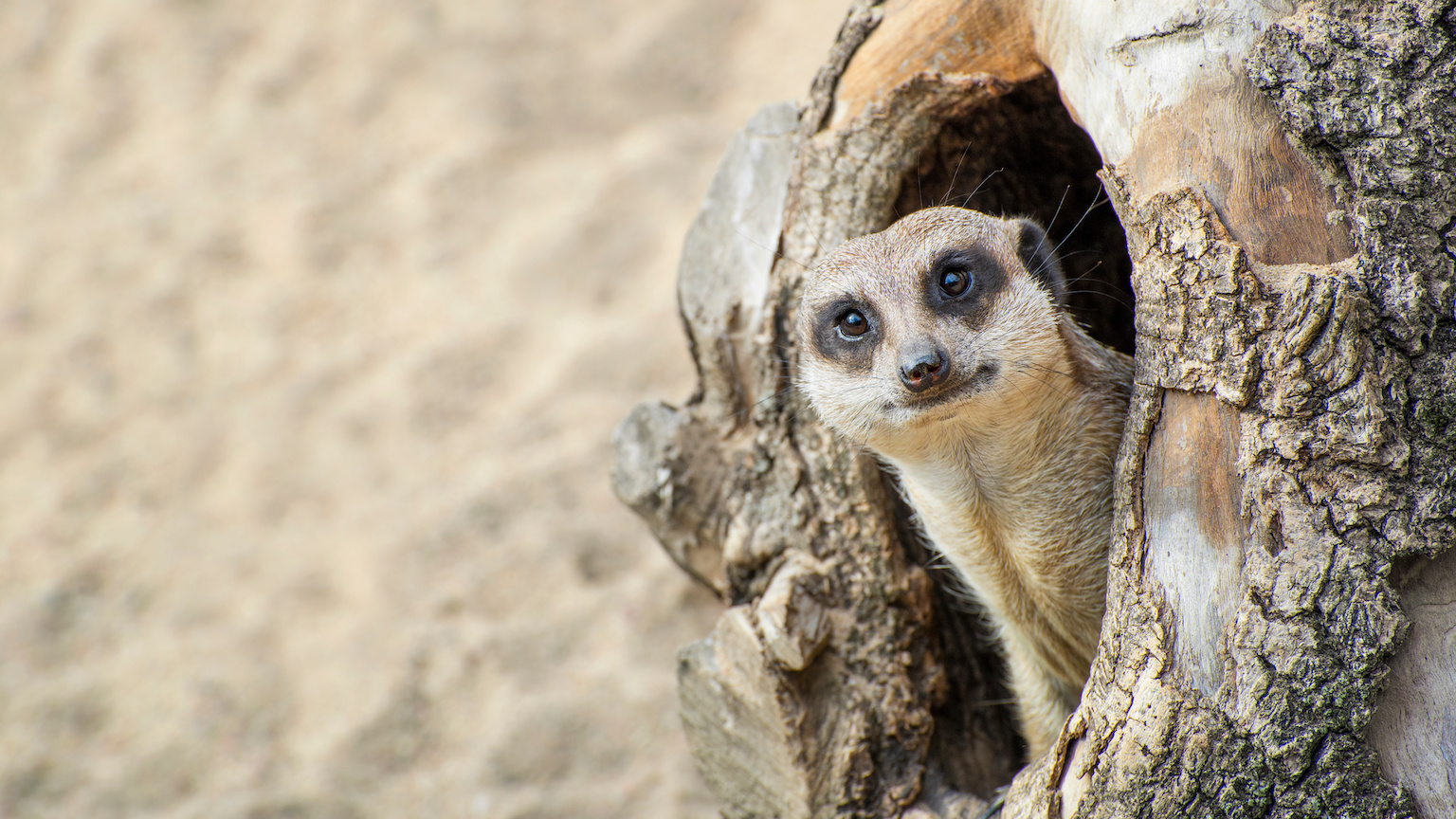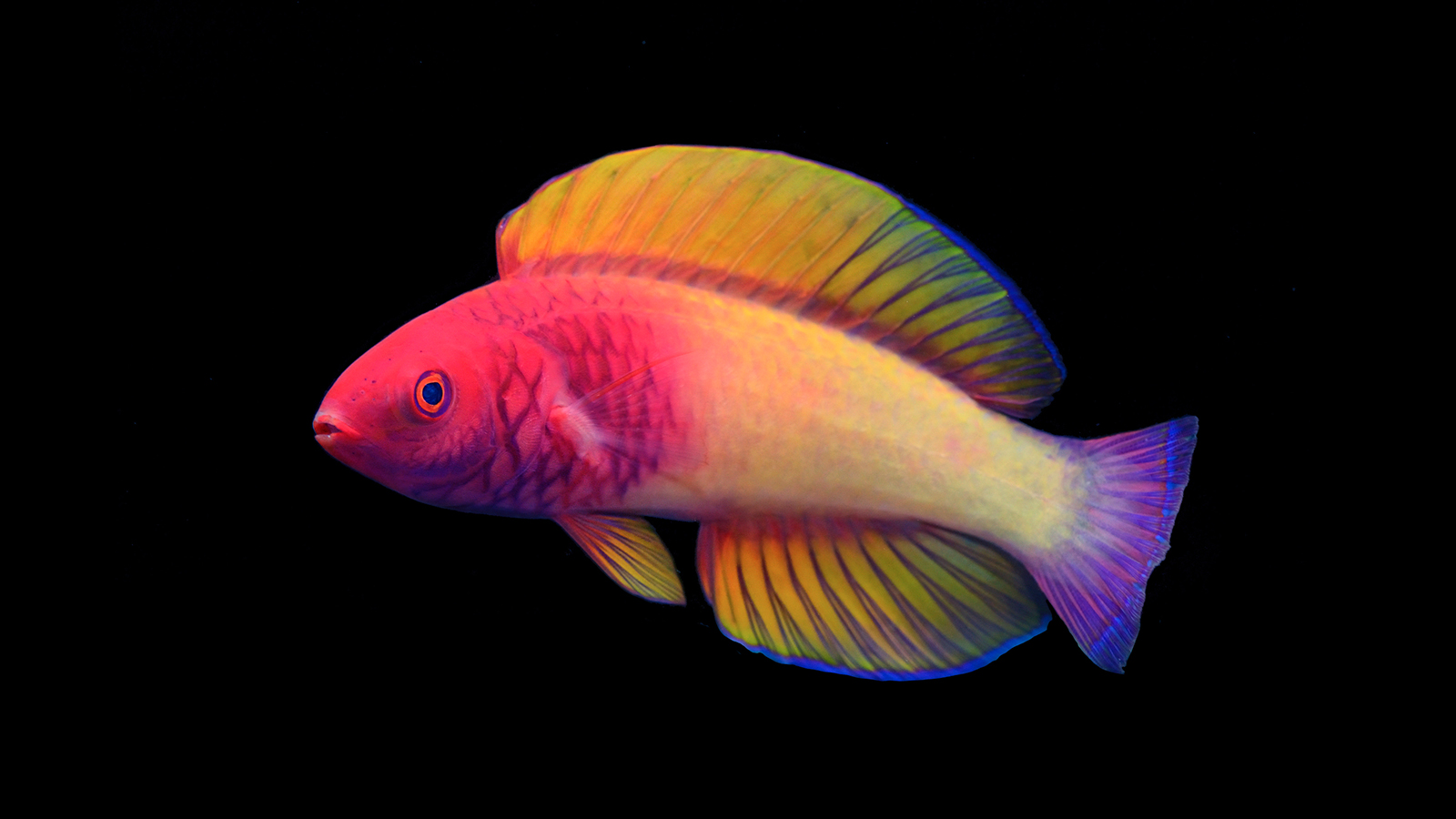Yes, size does matter: Solving the mystery of giraffe neck evolution

- The long necks of giraffes showcase how peculiar adaptive evolution can be. Yet the question remains why they evolved in the first place.
- The fossil of an ancient relative of the giraffe that was discovered in China, Discokeryx xiezhi, might hold the answer.
- The ancient giraffe sported headgear suited for fierce head-butting, likely during male-to-male competition. This suggests that early giraffes might have butted heads for the same reason they now strike with necks: to woo mates and establish dominance.
As evolutionary adaptations go, a giraffe’s neck seems bizarrely over the top. Towering as much as seven feet over the animal’s body, the disproportionate ungulate’s neck makes the giraffe the tallest mammal in the world.
All this vertical infrastructure comes at a cost: The great height of a giraffe makes it hard for the heart to pump blood to the brain. To compensate, giraffes have incredibly high blood pressure — nearly twice that of humans — and one of the largest and thickest hearts known to exist. Considering these physical adaptations, those necks must be so long for a good reason, right?
Scientists think so. Evolution does not keep extravagant physiological oddities that cost energy to maintain unless they confer some advantages. Even Charles Darwin and Jean-Baptiste Lamarck, the two most famous evolutionary biologists, cited the giraffe as evidence to support their theories.
The classic idea is that the giraffe’s long neck helps it reach the highest branches in the savannah, allowing it to forage for food that other animals cannot reach. Later research posited the “necks for sex” hypothesis. This construct would explain the so-called necking combat of male giraffes, who swing their 500-pound necks violently at each other in a classic fight for a female.
Undoubtedly, giraffes receive many benefits from their long necks. The question is, what started them down this path in the first place?
A fossil recently discovered in northwestern China’s Junggar Basin might hold the answer. The specimen, a relative of the giraffe, sports some unique headgear and a very robust skull — potential evidence that the animal engaged in some fierce head-butting. A group of international researchers led by Shi-Qi Wang of the Chinese Academy of Sciences analyzed the skulls of the peculiar creature as well as the ecological niches where it lived.
Discokeryx xiezhi (Disco – round plate, and keryx – horn, indicating its headgear), is named after the one-horned xiezhi, a creature from ancient Chinese mythology. After studying the headgear of D. xiezhi and other giraffe relatives, researchers proposed that the long necks of giraffes have evolved via sexual selection. In other words, for female giraffes, neck size matters.
Discokeryx xiezhi: the best head-butter of all time?
D. xiezhi has a flat, disklike headgear on the top of its skull made of keratin. As new layers of keratin proliferated, they pushed the older layers out, creating a helmet-like dome on the top of D. xiezhi’s head. The animal also had one of the most complicated head-to-neck joints in any animal studied, alive or extinct. Along with these features, its cervical vertebrae were enormously expanded and strengthened, likely to absorb intense amounts of force during fierce head-butting competitions.
Many ungulates (large animals with hooves) butt heads to attract mates, including bighorn sheep, deer, and rhinos. But the peculiar cranial morphology of D. xiezhi suggested that it was particularly good at receiving and taking fierce blows to the head. To test whether D. xiezhi was as good of a head-butter as the fossil suggests, the researchers scanned its skull and modeled how it would absorb varying forces of impact. They repeated their simulations by modeling living professional head-butters like muskoxen, who duel for up to eight hours at a time and strike each other at speeds up to 30 miles per hour. In every case, D. xiezhi’s skull absorbed more force. It could also land brutal strikes that would probably kill even the strongest muskox. Thus, the researchers concluded that D. xiezhi exhibits the most optimized head-butting adaptation in vertebrate evolution.
It runs in the giraffe family
In the past, giraffoids were much more diverse than they are now. The researchers diligently cataloged each known species’ skull morphology and headgear, detailing 14 known types of cranial adaptations that vary in structure, neck length, and vertebral thickness. Such diversity strongly suggests that giraffes and their relatives all engaged in head-to-head combat, but that each species had its own fighting style. Whereas the thick cervical vertebrae in D. xiezhi were related to head-butting, the long necks of today’s Giraffa are probably influenced by their “necking” combats, where two males use their massive necks to hit their opponents’ necks, bodies, and legs — all to establish dominance and woo a nearby female. This extreme behavior led to extreme evolution, and the evidence shows that the necks of modern giraffes probably evolved for combat in the same way as happened for their ancestors. Though their height clearly helps them reach new forage, the latter benefit came about because females consistently favored long necks.
Giraffe nature and nurture
The question remains: Why did giraffes and their relatives diverge in their headgear and combat styles? To answer this question, the researchers turned to the teeth of D. xiezhi to get a sense of the type of vegetation it ate. After analyzing the enamel samples, they concluded that these animals were open land grazers, but also foraged in some special areas with unique vegetation that their herbivore competitors could not access. We also know that D. xiezhi lived in a harsh climate with low productivity — meaning it existed in a very marginal niche. This saved D. xiezhi from having to compete with other species for food, but it also meant that its habitat could probably support only small groups of D. xiezhi. Such scarcity would contribute to survival-related stress, possibly sparking more intense fights between males hoping to reproduce before it’s too late.
We know that the long necks of giraffes emerged in the savannah areas when the East African plateau changed from a forested environment to an open grassland. The direct ancestors of giraffes had to adapt to these new changes. It is possible that, among giraffe ancestors during this period, mating males developed a way of attacking their competitors by swinging their necks and heads. This extreme struggle, supported by sexual selection, led to the rapid elongation of the giraffe’s neck over a period of 2 million years as it became the extant genus we know and love, Giraffa.
Interestingly, the long necks of giraffes opened another niche available only to the tallest giraffes: the top of the savannah. As necking combat developed, the dominant giraffes also benefited from high-level browsing. As the authors suggest, environmental stress led to intense sexual competition, which opened new types of exclusive yet limited forage, ultimately allowing the giraffe to respond to environmental challenges.





